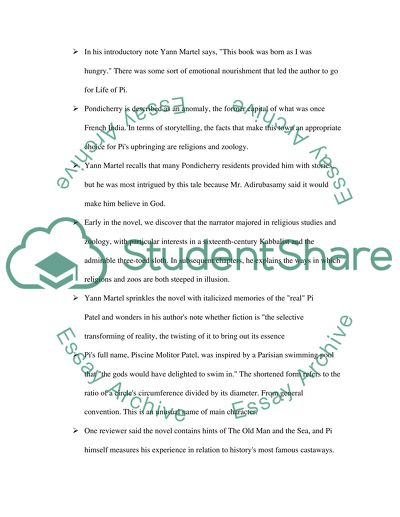Cite this document
(“Life of Pi Essay Example | Topics and Well Written Essays - 2000 words”, n.d.)
Retrieved from https://studentshare.org/literature/1506730-life-of-pi
Retrieved from https://studentshare.org/literature/1506730-life-of-pi
(Life of Pi Essay Example | Topics and Well Written Essays - 2000 Words)
https://studentshare.org/literature/1506730-life-of-pi.
https://studentshare.org/literature/1506730-life-of-pi.
“Life of Pi Essay Example | Topics and Well Written Essays - 2000 Words”, n.d. https://studentshare.org/literature/1506730-life-of-pi.


